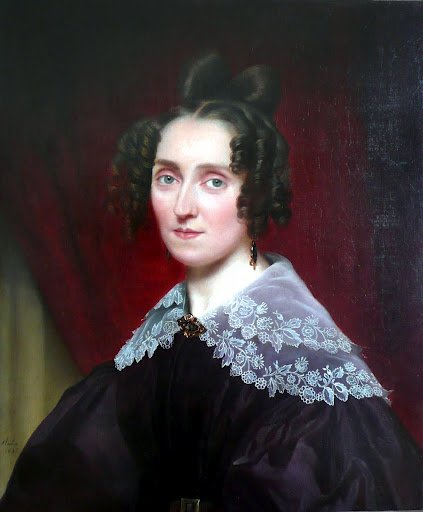Noseda, National Symphony unearth a neglected gem by Louise Farrenc

Louise Farrenc’s Symphony No. 3 is performed by the National Symphony Orchestra in its latest online program.
Gianandrea Noseda returned to Washington in March, to record four virtual concerts with the National Symphony Orchestra. The last of those streamed programs was released on Monday to digital subscribers, with a public release planned soon. These superb online concerts, spaced out over the last couple months, have tided NSO audiences over until the first live concert later this month.
Although it would have been easy to select chestnuts for these online affairs, the last two have featured mostly surprises. For his final program Noseda paired Haydn’s Symphony No. 96, last played by the NSO over 20 years ago, and the NSO debut of the Third Symphony by Louise Farrenc.
The music of Farrenc (1804-1875) is finally getting its due. The French composer had an early career as a piano virtuoso and then expanded her composition from mostly piano pieces to orchestral repertoire. She undertook three symphonies after assuming the post of professor of piano at the Paris Conservatoire. Her Third Symphony, completed in 1847, was premiered by the Société des Concerts du Conservatoire in 1849.
It is a piece of astounding beauty. The first movement opened with a pensive Adagio section, the oboe and woodwinds answered by strings. Noseda took the ensuing Allegro at a charming pace, so that the many exposed parts for woodwind solos, especially in the second theme, unfurled in pliant fashion. A more decisive coda rounded out the movement with gravitas.
The substantial Adagio Cantabile put the velvety playing of principal clarinetist Lin Ma in the spotlight. The warm, suave melodic writing felt like a tribute to Mozart’s Clarinet Concerto at times, with an envelope of soft horns and timpani in the distance. Impeccable intonation characterized the warm strings throughout, even in the gorgeous soft ending. Even with only two horns and no other brass, the orchestration is remarkably varied.
A Mendelssohnian eye-twinkle marks the playful Scherzo movement, again set at a gracious tempo by Noseda, so that every trill and detached cascade could sparkle. The Trio, dominated by distant hunting calls in the horns and pastoral woodwinds, was often accompanied only by pizzicato first violins. The devilish main theme of the Finale contrasted with a tender theme, the struggle between major and minor ending with a return to the home key of G minor. Noseda dialed up the intensity and the strings responded with edge and energy.
Haydn composed Symphony No. 96 for his first trip to London, where it was performed by the impresario and violinist Johann Peter Salomon in 1791. The first movement alternates between brilliant tutti sections, crowned by the brilliant sound of the two trumpets, and joking short motifs traded back and forth between woodwinds and strings. (The nickname of the symphony, “Miracle,” has come to be attached to this symphony in confusion with an event that occurred at the premiere of Symphony No. 102.)
The Andante is an affable serenade, full of little delightful touches, especially a triplet arpeggio that bubbles subtly through many instruments. In a surprise ending, the orchestra cadences on a tonic 6/4 chord, the signal for a cadenza to begin in an instrumental concerto. Haydn provided an orchestral cadenza, for Salomon on solo first violin and his second violinist. Oboe, flute, and bassoon take over for the final trill.
Noseda hit the right reserved tone again in the Menuetto, with a weighty approach and dignified tempo. Principal oboist Nicholas Stovall poked along on the amiable tune of the Trio, adding ornate embellishments on the final repeat. The spritely even slightly ditzy Finale rounded out a pleasing performance, hopefully the first of many Haydn outings by Noseda and the NSO.
The NSO returns to the Kennedy Center Concert Hall for more Haydn and Shostakovich’s Piano Concerto No. 1 with Daniil Trifonov as soloist, 7:30 p.m. May 28. This live concert will be recorded for streaming at a later date. kennedy-center.org
